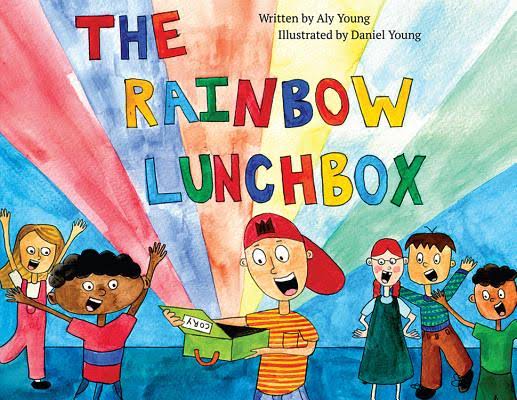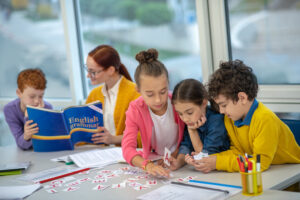In 2017, I wrote and published a book called “The Rainbow Lunchbox”. I decided that it was absolutely necessary to find a fun and creative way to encourage kids to eat healthy foods. I have worked with children for my entire adult life. First, as a first-grade teacher in public, private, and charter schools, and now I own a learning center for children with learning differences such as Dyslexia and ADHD. I have noticed both a lack of education and enthusiasm from parents and students when it comes to eating brain boosting foods, no matter the demographic.
People have long been aware that what we put in our bodies directly impacts our bodies, as far as appearance. On Thanksgiving, we even recognize how the tryptophan in turkey triggers a sleepy mood. Why is it such a foreign concept that food impacts the brain and therefore impacts how well children can perform in school? I hear parents constantly complaining that their kids are experiencing energetic and emotional highs and lows. They are either exhausted and lethargic or bouncing off the walls. When I take a closer look in their lunchbox, I see everything I need to know. I see rice crispy treats, cookies, fruit loops, goldfish crackers, crustables, lunchables, etc. The amount of simple carbohydrates and processed foods found in the average lunch box is alarming.
The truth is, and the research shows, that foods that are filled with processed sugars and loaded with chemicals deplete the brain from the ability to focus, self-regulate, and learn successfully. Food must provide nutrition for the brain and body. This is exactly why I wrote “The Rainbow Lunchbox” and promote healthy eating at my center. According to Carla Hannaford in Smart Moves: Why Learning is Not All in Your Head, “without sufficient water, amino acids, complex carbohydrates and sugars, and good fats, our frontal lobes do not function properly. We are unable to self-talk, control our own behaviors, plan ahead, speak articulately, display integrated motor skills, or think before acting”.
My book is about a vibrant boy that moves to a new town where there is a clear lack in motivation and excitement. He and his mom eat a diet that is comprised of every color of the rainbow. This is portrayed explicitly by showing the beautiful, colorful refrigerator and the little boy’s lunchbox that burst into rainbows and fill the world with color. This is demonstrated implicitly by showing that he and his mom are always illustrated in vibrant color and the rest of the town is in black and white. As he and his mom move around and expose the community to their way of eating, living, and feeling, they spread color and joy! Finally, it is the lunch lady that becomes the antagonist in the story since she has seen all the eating “fads” come and go. Once she sparks a memory of how good, healthy eating previously made her feel as a child, she commits to “rainbow lunches” throughout the school. This book has rhyming, humor, and is bursting with colorful illustrations.
At Learning Lab, we model and encourage healthy eating. We monitor snacks and will often meet with parents to educate them on the relationship between the goals we set out to accomplish, academically and behaviorally, and how what their child is putting into their body will impede or improve that progress.
When a child is coming to our center to work on intense intervention programs, such as Fast ForWord and/or Orton Gillingham based reading instruction approaches, their brains require the optimal fuel and energy from a “Rainbow Lunchbox” kind of diet.
Here are just a few examples of research findings related to nutrition and learning discussed by Eric Jensen in Teaching With the Brain in Mind (2nd edition, 2005):
- The brain needs a variety of nutrients to be able to function optimally. To focus, remember and regulate our emotions we need protein, unsaturated fats, complex carbohydrates and sugars (in grains, fruits and vegetables), as well as a host of trace elements such as iron, potassium, and selenium.
- Low blood sugar because of lack of complex carbohydrates negatively affects the hippocampus which plays a central role in learning.
- Sufficient protein is essential because growing bodies need protein more than any other nutrient (besides clean water) and proteins are synthesized into dopamine and norepinephrine which are essential chemicals for quick reaction time, thinking and working memory.
- Vitamins A, B, C, and E and fatty acids (primarily omega 3’s) are essential for vision and cell maintenance. These are NOT found in white bread, pasta, sugar, and Tator Tots.





